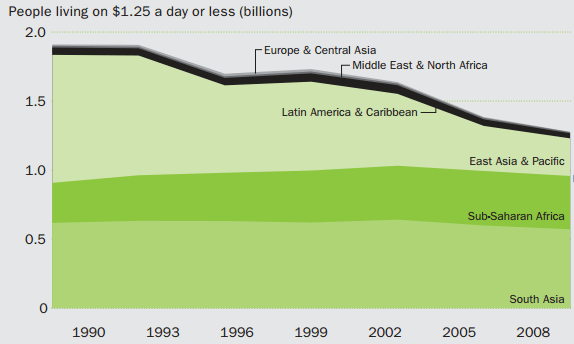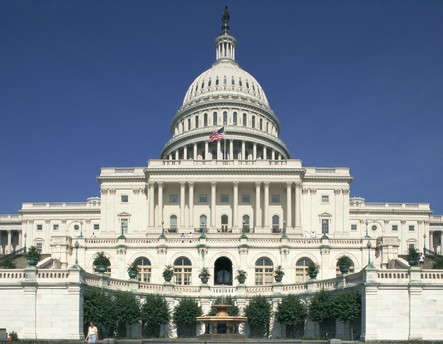Politics

This essay critically analyses the level of destructive impact of colonialism on China’s growth output between the 1840s and the 1940s. The essay contains the contrast of opposite arguments regarding the topic and supports the argument confirming destructive impact of colonialism on China’s growth output between the 1840s and the 1940s by providing relevant and valid justifications. A study of economic history can provide valuable knowledge to economic theorists and practitioners in terms of dealing with economic challenges of present and the future. An in-depth analysis of factors causing the level of economic growth to slow down in particular is necessary so that these factors can be dealt with to fuel economic prosperity in any given region. Colonialism can be defined as “the control or governing influence of a nation over a dependent country, territory, or people” (Colonialism, online, 2016). While forming new colonies may prove to be a profitable strategy for powerful countries in many levels, economies that become victim to colonialism experience a set of substantial economic and social setbacks such as loss of sovereignty in terms of using economic resources, and negative impact upon cultural identity. The essay starts with assessing the level of China’s economic growth between the 1840s and the 1940s providing evidences why it was slow for this specific period. This is followed by discussions of colonialism and its negative impacts on the level of China’s economic growth between the 1840s and the 1940s. In order to adhere to the specified word limit for this essay political implications of colonialism are not addressed in this essay, and the main focus have been made on effects of colonialism on national economics using the case study of China. Moreover, an alterative viewpoint on the issue is also explored in this essay by assessing the impact of…

Rapid technological development during the last several decades coupled with a series of breakthroughs in information technology has immensely contributed to the development of national economies for a wide range of countries with positive implications on standards of life of people. At the same time, global poverty still remains one the most pressing issues with almost half of the world – more than 3 billion people living on less than $2.50 a day (Shah, 2016, online). The issue of global poverty is periodically addressed by a set of organisations such as World Bank, One International, WHO, CARE and others, as well as, within the framework of The Group of Twenty (G20) forum. This article represents a critical assessment of the role of World Bank in particular in dealing with global poverty. The article starts with the general discussions about the World Bank and its current contribution in eliminating global poverty. This is followed by analysis of criticism of World Bank performance in dealing with global poverty. Moreover, this article identifies potentials for World Bank to deal with global poverty more effectively. The World Bank Group is an international financial institution that pursues its mission of ‘Help Reduce Poverty’ with the participation of 188 countries. The World Bank Group consists of five organisations that are The International Bank for Reconstruction and Development (IBRD), The International Development Association (IDA), The International Finance Corporation (IFC), The Multilateral Investment Guarantee Agency (MIGA), and The International Centre for Settlement of Investment Disputes (ICSID). Each of these organisations contributes to World Bank mission in a unique way. It is important to clarify that generally the term ‘World Bank’ refers to only IBRD and IDA, and these two organisations along with IFC, MIGA, and ICSID are incorporated within the World Bank Group. Within the scope of this…

Introduction Described as the greatest geopolitical catastrophe of the 20th century by the current president of Russia Vladimir Putin (BBC, 2005, online), the collapse of the Soviet Union has caused profound changes in global political and economic affairs, impacting the lives of hundreds of millions of people. Union of Soviet Socialist Republics (USSR) has been formed in 1922 and it has enjoyed the culmination of its influence in the global scale following its victory in World War Two within the period from mid 1960s to mid 1980s being able to send the first man to the outer space in 1961 and achieving relative stability in the standard of life of member state citizens. Initially, Soviet Union comprised only six member states in 1922 – Russian, Ukrainian, Byelorussian, Azerbaijan, Georgian and Armenian Soviet Socialist Republics; however its size has been gradually increased during the following two decades until 1941 to reach the numbers of member states to 15 through expanding into Central Asia and Balkan states. Nevertheless, due to the range of reasons discussed below the existence of USSR came to its end officially in 1991. Although more than two decades have passed since the collapse of the USSR this topic is regularly explored in academic levels due to its importance and impact to the formation of present geo-political situation. This essay attempts to analyse the major reasons and implications of the collapse of the Soviet Union. Economic, cultural, social and political factors contributing to the collapse of the Soviet Union are discussed in this essay and implications of this event on regional level for former USSR blog countries, as well as, on the global landscape are assessed. Economic factors contributing to the collapse of the Soviet Union Assessment of economic factors that led to the collapse of the Soviet Union…

Introduction Foreign aid can be defined as “any action by a government or citizen of one country, which helps to promote economic development in another country” (Kazimbazi and Alexander, 2011, p.28). Many countries situated in Africa do receive substantial amount of foreign aids from other countries, international organisations and private philanthropists. Foreign aid is mainly provided in the forms of financial aid, technical support and food aid. According to Wall Street Journal (2009), over the past 60 years the amount of foreign aid provided to Africa has exceeded USD 1 trillion and foreign aid has been provided to deal with a wide range of serious problems such as extreme poverty, fighting with HIV/AIDS, malaria and other diseases, internal conflicts and abuse of human rights, child labour and human trafficking etc. This essay critically analyses the topic of foreign aid and growth in Africa in general and in Uganda in particular. The essay starts with discussions of means and methods of delivery of foreign aid to Uganda. This is followed by analysing the benefits of foreign aids and level of dependency of Uganda on foreign aid. быстрые микрозаймы онлайн Moreover, the opposite viewpoint addressing the disadvantages of foreign aid to Uganda and an overview of popular arguments of sceptics of foreign aid have been included in this essay. The essay is concluded by discussing a range of alternatives to foreign aid in order to achieve economic development in Uganda. Republic of Uganda has more than 34,5 million population with the life expectancy of 54 years for men and 55 years for women (BBC Uganda Profile, 2013). Comprising 241,038 square kilometres, Uganda is bordered with Kenya in the east, Tanzania and Rwanda in the south, and the Democratic Republic of the Congo in the west (Barlas and Yong, 2010). Today Uganda is faced…

1. Introduction This article attempts to answer the question What is the United Nations? Moreover, the article represents a detailed analysis of the level of effectives of the UN in global governance. The article starts with discussing the role of functions of the UN, explaining the roles and functions of each UN’s six organs in an individual manner. This has been followed by identification of gaps in global governance and discussions about the role of the UN in terms of the extent of filling each gap. Furthermore, the article critically analyses the overall level of effectiveness of the UN in global governance and discusses the potentials for increasing the level of effectiveness in the UN in global governance by proposing a set of recommendations. Increasing level of integration and cooperation between counties in various levels creates a need for reputable international bodies that could assist in facilitating international relations, and more importantly, deal with disagreements and conflicts that may occur in international relations. The reality of the present nature of global governance is the outcome of conflict between the need to introduce global rules and regulations, and the willingness of retaining control over national boundaries. The is a set of reputable international organisations currently operating in the global scale such as The United Nations, The World Trade Organisation, The World Bank, North Atlantic Treaty Organisation and others, and each of these organisations engages in global governance with varying levels of effectiveness depending on their aims and objective, resources, sources of funds and other factors. The United Nations (UN) is an international organisation “committed to maintaining international piece and security, developing friendly relations among nations and promoting social progress, better living standards and human rights” (UN at a Glance, 2016, online). Founded on October 24, 1945, the UN comprises 193 member…

Introduction There always have been disparities between countries in terms of the levels of economic developments and this tendency is most likely to continue in the future. However, there have been attempts by highly developed countries to assist the level of economic development of developing countries through various programs involving financial aids and recommendations. A set of policy recommendations proposed by the US to developing countries has been known as Washington Consensus, and there are mixed opinions about the implementation and outcome of these recommendations (Bandelj and Sowers, 2010). This article critically analyses the ideology of Washington Consensus. The article starts with discussions about factors and circumstances that have caused the emergence of Washington Consensus. This is followed by discussing positive implications of Washington Consensus for certain countries by referring to relevant facts. Moreover, the article highlights major points of criticism of Washington Consensus and the attempts to assess the level of their validity of these points and discusses reasons and circumstances for introduction of Post-Washington Consensus also known as Washington Consensus II. The article is completed by attempting to the future of Washington Consensus prescriptions in modern dynamic global geo-political environment. Emergence of Washington Consensus The term of Washington Consensus has been coined by in 1989 by John Williamson to label “list of ten policies that more or less everyone in Washington would agree were needed more or less everywhere in Latin America” (Williamson, 2008, p.14). Williamson had specified these ten reforms proposed to Latin American countries as a greater level of fiscal discipline, re-ordering of public expenditure priorities, taxation reforms, liberalisations of interest rates, increasing the levels of competitiveness of interest rates, liberalisation of trade, liberalisation of inward foreign direct investment, privatisation, deregulation, and property rights. Latin American countries were facing severe economic challenges throughout the 1980s, and this…

Family as a cell of society plays an integral role in facilitation of its functioning in an effective manner. As the most basic unit in society, families can have preventive impact in relation to a wide range of issues such as drug addiction, teenage pregnancy, dealing with stress etc. In other words, neglecting the value of families as the smallest and ancient social institution in society can have highly negative implications for the society at various levels, as well as, having negative effects on the state of national economy in direct and indirect manners. Alternative basic units in society to traditional families include people living alone, single parents, different forms of collective living arrangements, and others. However, the majority of sociologists adopt a skeptical approach about the levels of positive contribution of alternative basic units in society as opposed to traditional families consisting of two parents and one or more children for justified reasons. Escalating role of family as a social structure impose significant challenges to benefits derived from family social institution to the society in the future. A set of factors impacting the decline of popularity of families mainly in developed countries such as UK and USA in a traditional sense with two parents and one or more children include certain demographic tendencies such as ageing population, increasing numbers of couples without children, and household fission i.e. “the tendency for households to split, because of divorce and earlier independence for children” (Spicker, 2014, online). Moreover, a tendency of prioritising career over family amongst young people possesses further threat to the role of families and associated social and personal values in the future. It is important for a state to assume an instrumental role in terms of promoting and reinforcing formation of families in traditional sense in society. This role…
By John Dudovskiy
Category: Politics

Explanation of the outbreak of the Great Recession of 2007-8 in a chronological order is necessary in order to provide detailed information about the case study, and link discussions and analysis in following chapters to specific events within the chronology. Date Event 2007 AugustOctober December Funds freezed by the US Federal ReserveRecord high at Dow Jones Official start of the recession in the US 2008 MarchJuly September October November Collapse of Bear SternsGDP fall of 0.6% confirmed Denmark as the first European economy to face recession Record unemployment rate in the US during the last 5 years Takeover of Fannie Mae and Freddie Mac US President George Bush signs USD 700 billion bailout fund Singapore is the first Asian country to face recession with the economy shrinking 6.3% Hong Kong confirmed as the 2nd Asian country to face recession 2009 JanuaryFebruary June GDP fall of 1.5% in 4thquarter of 2008, confirms the beginning of recession in the UKObama stimulus package signed Issue of Greece’s budget deficit emerge 2010 JanuaryApril October UK economy comes out of recession with a GDP growth of 0.1%Creation of 162,000 job in the UK Greece and Ireland are bailed out in the EU as a result of adoption of austerity measures 2011 April May Portugal asking for the EU help in dealing with its financesPlanning of a permanent rescue fund in EU by leaders of its members The loss of US AAA credit rating Approval of EURO 78 billion bailout for Portugal by EU leaders Chronology of the Great Recession of 2007-8 Source: Roberts (2009), Heng (2010) and Hetzel (2012) References Heng, M.S. (2010) The Great Recession: History, Ideology, Hubris and Nemesis, World Scientific Hetzel, R.L. (2012) The Great Recession: Market Failure or Policy Failure, Cambridge University Press Roberts ,M. (2009) The…

While there is a consensus amongst authors regarding rapid hegemonic rise of China opinions divide about sustainability of this tendency in long-term or even medium term perspectives. On one hand, there are authors such as Zhang (2012), Sobel (2012) and Joseph (2013) who express firm belief about the sustainability of Chinese hegemony. This group of authors refer to the strong competitive advantage of economy of China that is expanding beyond the cost advantage of resources to compete with producers from developed countries on quality levels. On the other hand, a range of authors such as Catley and Mosler (2007), Balogun (2011) and Nye (2011) adopt a sceptical approach about sustainability of hegemony of China in long-term perspectives. This specific group of authors justify their stand by stating that China’s hegemonic rise is directly conditioned by its volume of exports, and sustainability of volume of export depend on a wide range of internal and external factors that are becoming increasingly volatile. Nevertheless, the literature review has found a set of political, economical and social factors that contribute to the rise on the level of hegemony of China. Each of these factors is discussed below in greater details. Political Factors Political factors contributing to the rise of China’s hegemony are closely associated with damages to the reputation of present world hegemon – the USA through unsuccessful engagement in a series of foreign wars (Catley and Mosley, 2007, Zhang, 2012, Joseph, 2013) and a range other factors discussed below. Zhang (2012) argues that financing overseas wars in Iraq, Afghanistan, and Libya is draining national economy of the USA. Moreover, eagerness of the US President Barack Obama to initiate military engagements in Syria is most likely to have highly detrimental impacts on the level of national economy. Moreover, US government sponsors a range…

According to Nye (2011) wars and military conflicts between countries are never going to cease in the future because confrontionism is deeply rooted in human genes. Generally, the debate regarding hegemony can be divided into two broad and opposing categories. On one hand, supporters of Habermas such as Catley and Mosler (2007), Russett (2011) and Baker (2011) do believe that it is possible for countries to engage in international relations without dominant power in an effective manner. On the other hand, supporters of Foucault such as Schake (2009), Balogun (2011), and Nye (2011) argue that international relations cannot be facilitated without power, but the nature of power can be represented in various formats. In other words, according to this stance hegemonic power will always influence international relations; however, the level of evidence of this influence varies according to a range of factors. Lee (2010), Russett (2011) and Baker (2011) find positive correlation between rising military power of a state and its hegemonic ambitions. Table 2.1 illustrates major hegemonic wars during the last several centuries and contains information about their results. Hegemonic War Duration Results Thirty Years’ War 1618 – 1648 Defeat of Habsburg Wars of Louis XIV 1667 – 1713 Defeat of France Napoleonic Wars 1792 – 1814 Defeat of France; Emergence of Britain as hegemon World War I 1914 – 1918 Defeat of Germany World War II 1939 – 1945 Defeat of Germany; Emergence of the USA as hegemon Table 2 Hegemonic wars during last several centuries and their results Source: Lee (2010) US Hegemony in the 20th Century and Its Perception by other Countries According to Catley and Mosler (2007) the US hegemony has mainly started after the World War II of 1939 – 1945. Specifically, Catley and Mosler (2007) link this fact to the chosen stance of…
